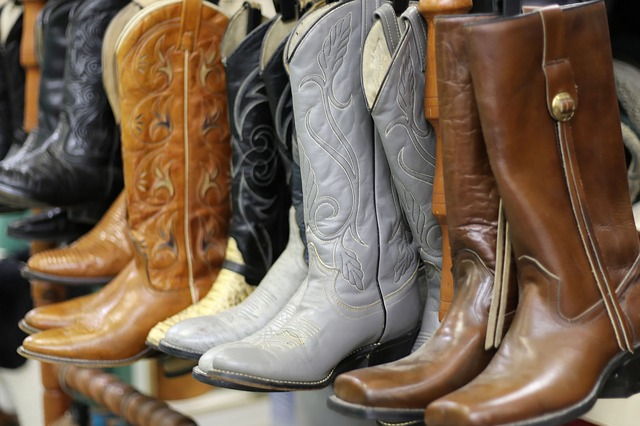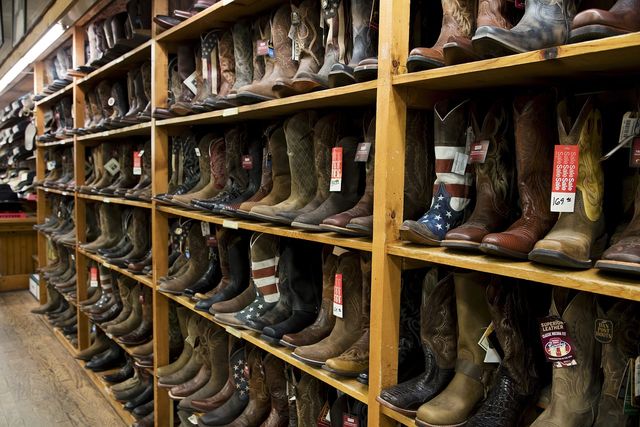Western Wear: The Enduring Popularity of the Cowboy Boot
Due to the rugged nature of their jobs, 19th century cowboys and lawmen needed sturdy western wear. This included their boots which they liked to wear with higher heels.

Western wear of European origin
The 1800’s saw Europeans flocking heavily to America. The Wellington boots worn by European migrants became popular in the states as a riding boot. As these boots were easy to manufacture, they have become increasingly popular with the soldiers during the Civil War.
The cowboy era followed the end of the Civil War. This was the post-war period development of the cattle industry, as well as the growth of various industries and infrastructure in the west. It is during this era that the cowboy boots that we know today evolved.
Post Civil War boot designs
The post-war cowboy boot used to be a straight basic design leather boot with one-inch heels. Another popular style of western wear among cowboys was the Hessian boot with its distinctive frontal V-cut.
Coffeyville, Kansas became popular for its unique style of cowboy boots about 1870. The boots were usually made of black leather and has a low Cuban heel. The front part of the boot (graft) was of a different color and higher than the back. The graft was sometimes inlaid with a single star by Texas cowboys.
Tradition has it that Charles Hyer was one of the early innovators of cowboy boots. A cowboy from Colorado was said to visit the Hyer store to have a new pair of boots made that was not of the same style as the Civil War boots.
The development of the cowboy boot continued to advance through the late 1800’s. The European cavalier boot style, marked by high quality leather and higher heels, influenced the designs of that period.
Design changes for the 20th century
Early design of cowboy boots had a toe wrinkle, straight line stitches that ran across the top of the toe. During the early 1900’s, boot makers altered the design by adding some fancy stitching, besides the wrinkle stitches on the toes. This new design addition has continued to the present as a personal touch in custom-made cowboy boots.
The Wild West radio programs and films of the 1920’s and 1930’s made the cowboy boot not only a popular western wear, but a fashionable one. Boot designs became even more fancier and colorful during the 1940’s with the addition of images of horses, eagles, horseshoes, and cactuses. There were no changes in the rounded and square toes of cowboy boots until the 1950’s where pointed toes came in style.
Rodeos became a well-liked crowd-pleaser during the 50’s decade. This and country-western music by Hank Williams and other “singing cowboys” of the period made the sale of cowboy boots shoot up. Millions of pairs were made and sold in various colors and designs.
The spaghetti westerns of the 1960’s did a lot to make western boots stay in demand. During the 1970’s, actors like Robert Redford and John Travolta helped increase the sale of cowboy boots after wearing them in their gunslinger movies.

The traditional plain leather boot is still a popular fashion item today. The fact that it can be a part of anyone’s western wear ensures that the cowboy boot will have timeless appeal.
For more information about cowboy boots, read Choose the Right Cowboy Boots for Cowboy Action Shooting.
See more Western Wear by dropping by our Western Shop.
